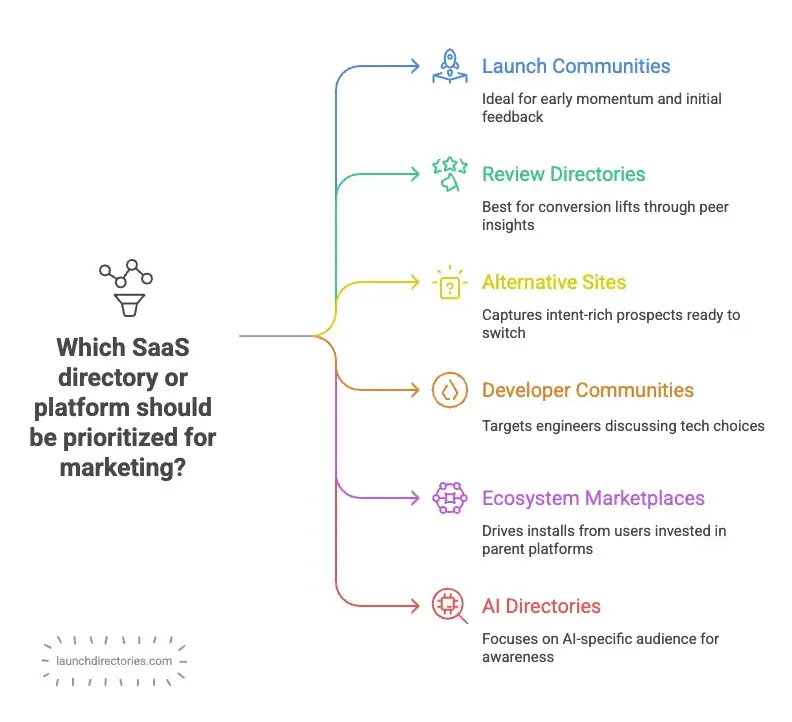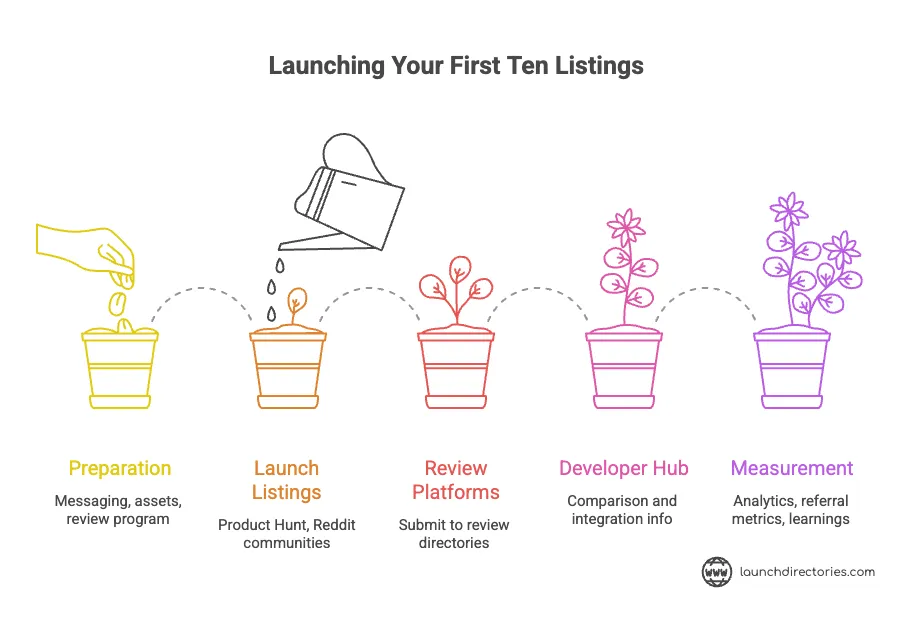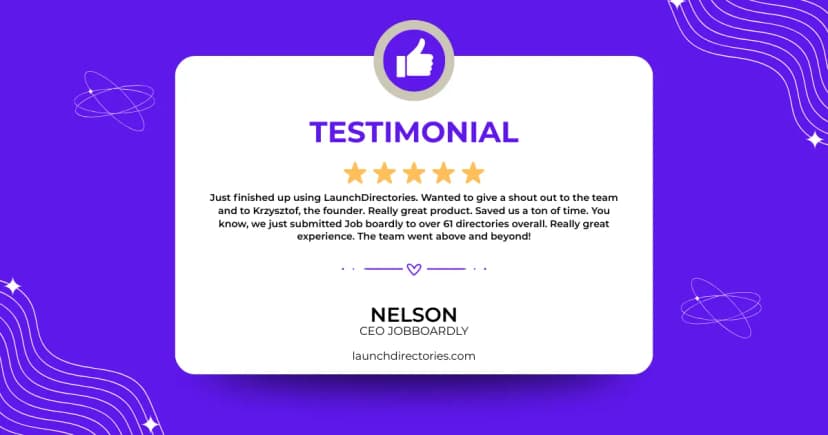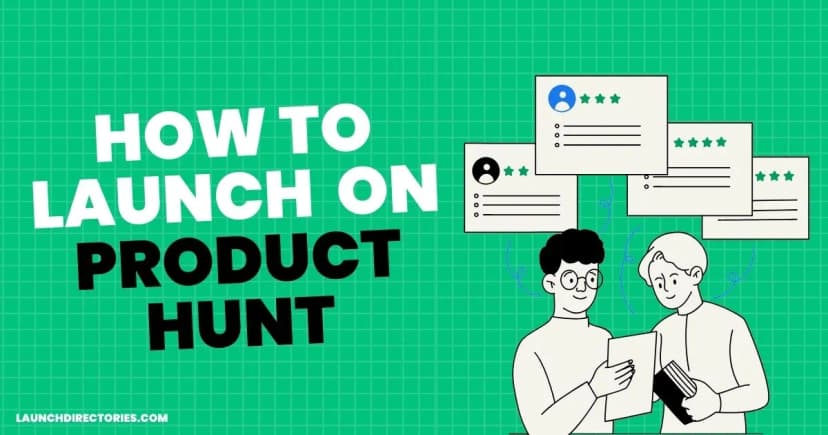If you are building a software company, you already know attention is the scarcest resource. Buyers research quietly, compare alternatives, and only raise a hand when they trust you. That is exactly why online directories are still one of the most efficient distribution channels for SaaS. The right business directory can put your product in front of a motivated target audience, add third party validation through ratings and reviews, and give you a credible link that supports long term SEO.
Unlike ad campaigns that peak and fade, a well crafted business listing compounds. It sits where people are already searching for solutions, it helps potential customers discover your brand via search engines, and it gives your sales team credible proof points to share with clients. In short, directory submissions are not busywork. They are a strategic lever for visibility, authority, and pipeline.
This guide shows you how to use web directories as a SaaS growth channel. You will learn which categories matter, how to prioritize platforms, what a high converting business profile includes, how to collect and showcase social proof, and how to measure impact without guesswork. You will also get a pragmatic shortlist table so you can pick your first ten listings in minutes.
What “online directories” means in a SaaS context?
What are online directories? At a basic level, they are platforms that organize and present software products so buyers can compare options. In SaaS, that covers several useful formats:
Launch and discovery communities where new products trend on daily or weekly charts.
Review driven business directories where buyers evaluate vendors by features and verified feedback.
“Alternative to” style comparison sites that rank tools inside specific niches.
Developer centric hubs that focus on integrations, stack choices, and technical audiences.
Ecosystem marketplaces where apps extend a parent platform.
These are not simple link dumps. The best sites invest in relevant content, category curation, and useful filters so real buyers can make informed decisions. For you, that means each listing is a mini landing page that must communicate positioning, proof, and outcomes fast.
Why directories matter for SaaS buying journeys
Modern B2B buyers do long stretches of independent research. They consult peers, comb reviews, and validate vendors before talking to sales. A 2024 benchmark of B2B buyer behavior reports a rising reliance on peer reviews and community insight, with 33 percent of respondents saying they relied more on peer recommendations and reviews year over year, and 31 percent naming peer reviews among the first three resources they access during research.
Those behaviors make directory listings high leverage for three reasons:
Discovery where buyers searchDiscovery platforms and review hubs rank strongly in search engines for software category queries. That puts your product in front of buyers who are intent driven and comparison minded.
Independent social proofReviews, ratings, case study snippets, and customer quotes reduce perceived risk. Your site claims are expected. Third party validation is persuasive, especially for committees that must justify decisions with clear evidence.
Compounding authority through linksMany directories provide a crawlable link to your website. Search engines interpret link patterns to understand the web. While the specifics of link equity are nuanced, Google’s guidance on link attributes explains when links are considered sponsored, user generated, or unqualified using rel values like sponsored, ugc, and nofollow. Understanding and respecting these patterns helps teams manage risk and quality. (Google for Developers)
Sales enablement and buyer enablementA credible presence on trusted platforms makes it easy for reps to share third party resources in sequences and for buyers to bookmark you during research.
with 100+ Directory Listings
Skip the grind. We'll submit your product to top directories so you get real users, feedback, and lifetime backlinks without lifting a finger.
The main types of SaaS directories and platforms
Think in categories before you think in brand names. That keeps your strategy focused on audience fit and intent.
1) Launch and discovery communities
These platforms spotlight new tools through daily or weekly leaderboards and editorial curation. They are ideal for creating early momentum, capturing email signups, harvesting initial feedback, and seeding your first reviews. Examples include Product Hunt, Hacker News “Show HN,” relevant Reddit communities, and maker focused charts like Shipybara for indie AI projects. Momentum on these sites often translates into downstream press mentions and a wave of organic traffic.
2) Review driven business directories
Buyers rely heavily on peer insight. Review led directories excel here because they combine structured feature tables with testimonials and side by side comparisons. They also send qualified referral traffic as buyers click through vendor profiles to request demos. Popular examples include G2, Capterra, and GetApp. Build a repeatable review program and you will see meaningful lifts in conversion on these platforms and on your own site.
3) “Alternative to” comparison sites
These are web directories that categorize tools by use case and list best options relative to incumbents. They capture powerful intent. Prospects searching “Alternative to X” are dissatisfied with a current tool and ready to switch. AlternativeTo is the well known example, and there are niche alternatives in categories like analytics, dev tooling, and AI apps.
4) Developer and stack communities
If your target audience includes engineers, list where they discuss architecture choices and integrations. Examples include StackShare for tech stacks, curated Awesome Lists on GitHub, and communities such as Indie Hackers where builders exchange playbooks.
5) Ecosystem marketplaces
If your SaaS integrates with a major platform, the native marketplace is non negotiable. Think Slack App Directory, Atlassian Marketplace, Salesforce AppExchange, HubSpot’s app marketplace, or Notion templates galleries. Ecosystem marketplaces drive intent rich installs, attract users already invested in the parent platform, and often include review features of their own.
6) AI specific directories
If your product uses or enables AI, specialized directories concentrate attention from an audience actively exploring new AI tools. Examples include trend focused charts and curated AI catalogs. Treat them like accelerants for awareness and early adopter feedback.

How to select the right platforms: a simple decision framework
Use this four part filter and you will avoid wasting time.
Audience fitIs your ideal customer a frequent visitor of this platform? Map the community’s buyer persona and seniority. If your users are data leaders, for example, a developer only hub is the wrong fit.
Intent matchWhat is the platform’s primary buyer intent? Discovery, evaluation, or integration. Launch communities are discovery heavy. Review sites are evaluation heavy. Marketplaces blend evaluation with integration.
Proof potentialCan the listing showcase ratings, logos, quotes, screenshots, and security information that address common objections? If yes, prioritize it.
Link quality and policyMany platforms include links that are either standard, nofollow, or sponsored. You do not control those attributes, but you should understand them and ensure your own outbound links are qualified according to Google’s guidance. That protects you from accidental policy issues and helps search engines interpret your relationships correctly. (Google for Developers)
A practical shortlist to start with
Use the table below to pick an initial batch of listings. The “Effort” column is a realistic estimate for a small team with a good base of assets and messaging. “Primary outcome” captures what you can reasonably expect when the listing is done well.
This table is not exhaustive. It is the fastest way to put your product in front of real buyers while you gather proof.
Crafting a high converting business listing
A listing is not a brochure. It is a compact conversion surface that must persuade in seconds. Use this blueprint.
Positioning and structure
Primary tagline: one sentence that states your outcome and target audience.
Problem context: 2 to 3 sentences naming the pain and the cost of doing nothing.
Core capabilities: 3 to 5 bullets that describe what the product does. Avoid vague phrases and feature dumping.
Proof: customer quotes, ratings, recognizable logos, or published benchmarks.
Pricing clarity: a simple plan comparison or a link to pricing details if the platform allows.
Call to action: a single next step such as “Start free trial” or “Book a demo.”
Visuals that earn attention
Use high resolution images that communicate outcomes, not chrome. Favor annotated screenshots, mini flows that tell a story, and short video demos. A simple animated GIF can outperform a static image when it compresses a core task into five seconds.
Technical housekeeping
Add UTM parameters to the primary website link to measure traffic and conversions per platform.
Ensure the listing links to canonical pages on your site.
If you control any outbound links from your own site to directory pages (for example in a press page), qualify them correctly with rel attributes when appropriate to comply with Google’s guidance. (Google for Developers)
Social proof that compounds: reviews, quotes, and case snapshots
Review platforms only work if you have reviews. Build a lightweight program that respects customer time.
Moments that matter: ask after value delivery moments such as onboarding completion, a key feature adoption, or a support save.
Make it easy: provide a short checklist of topics customers can cover in a review so feedback is specific and useful.
Diversity of voices: collect reviews from different roles in the buying committee. A practitioner and an executive see different value.
Close the loop: share how feedback shaped your roadmap. Customers are more likely to participate when they see results.
B2B buyers increasingly rely on peer reviews as a front line resource during research. The 2024 buyer survey cited earlier underscores this shift and quantifies how often buyers reach for peer insight before deeper vendor engagement.
Backlinks, authority, and realistic expectations
Many teams use directory submissions to earn backlinks that support search visibility. Approach this with clear eyes.
Domain Authority is comparative Moz defines Domain Authority as a score that predicts the ranking ability of a website based on link patterns. It is a comparative indicator, not a Google ranking factor, and scores naturally fluctuate as the web changes. Treat DA as a way to compare sites in your competitive set rather than a goal by itself.
Link attributes vary by platform Some directories give standard crawlable links, others use nofollow by default, and sponsored placements should be marked rel="sponsored". You do not control each platform’s policy. You do control your own outbound link hygiene. Google’s documentation explains how to qualify outbound links with rel values so search engines understand the relationship. (Google for Developers)
The bigger benefit is referral quality A single click from a comparison page with the right buyer intent often beats ten unqualified visits. Track conversions by platform to make budget decisions based on pipeline, not mythology.
Your first ten listings: an execution plan
Here is a practical two week sprint for a small team.

Day 1 to 2: messaging and assets
Finalize the elevator pitch, core capabilities, proof bullets, and pricing summary. Prepare a logo variant that works on light and dark backgrounds. Capture two high resolution screenshots and one short demo video.
Day 3 to 4: build review program basics
Pick ten customers who recently achieved value. Draft a short, respectful request email and a one page “how to write a helpful review” guide. Set up calendar reminders to follow up once.
Day 5 to 6: submit launch and discovery listings
Time a Product Hunt launch or a Show HN post if appropriate. Prepare authentic posts for the one or two Reddit communities that actually match your audience. Engage in comments and gather qualitative feedback.
Day 7 to 9: submit to two review platforms
Choose the two review directories that best match your category. Build complete profiles with screenshots, feature details, and customer quotes. Invite those ten customers to review using your prepared guide.
Day 10 to 12: add a comparison and a developer hub
Publish on an “alternative to” site and set up a StackShare page if your audience is technical. Include integration information and architecture notes.
Day 13 to 14: measure and adjust
Annotate analytics for each listing date. Review referral metrics, demo requests, and trial signups. Document learnings and plan a second wave for marketplaces or AI specific directories.
How to answer common questions teams ask
What are local online directories?
There are location oriented directories that list physical businesses. They are useful for storefronts and service areas. SaaS companies are different. Your buyers search by category and problem, not by geography, so prioritize software specific directories and communities.
How do I get a list of directories?
You can build your own spreadsheet by exploring launch communities, review sites, marketplaces, comparison hubs, and developer communities. If you prefer speed and completeness, LaunchDirectories maintains a curated database of more than eighty startup directories with metrics like rating strength and traffic estimates, and also offers an option to submit to one hundred plus directories in one pass. That saves time and ensures consistency across listings.
What is the best business directory?
There is no single “best” business directory for every SaaS company. The right choice depends on your target audience, your category, and your current stage. If you need awareness and feedback, pick a launch community. If you are strengthening evaluation, pick a review platform. If you sell through integrations, pick the relevant marketplace. Use the shortlist table above to match intent with outcome, then measure referrals and opportunities to validate your picks.
Content strategy tips that lift performance on every platform
Write to outcomes, not features Replace internal jargon with clear statements of the results your customers achieve.
Lead with a use case matrix Show two or three use cases with a single metric each. Example: reduce manual reconciliations, accelerate month end close, cut time to deploy.
Highlight integrations early Integrations signal fit with existing workflows. They also increase the chance your listing appears in marketplace discovery.
Be transparent about pricing Buyers want to forecast total cost quickly. If your pricing is usage based, include a simple visual or example calculation.
Keep screenshots current Outdated visuals erode trust. Refresh after any visible UI change or when you ship a headline feature.
Attach a short video A 45 to 60 second product tour that demonstrates a key workflow often doubles engagement on discovery platforms.
Measurement and optimization
Treat directory submissions like a program, not one off tasks.
Tracking Use UTM parameters on every listing link. Create a dashboard that shows sessions, signups, demo requests, and opportunities generated per platform.
Attribution sanity Expect last click to undervalue directories that create early awareness. Add assisted conversions to your review and consider simple post signup surveys that ask “Where did you first hear about us?”
Link quality review Maintain a sheet with each platform’s link policy. Note whether the primary link is standard, nofollow, or sponsored. For outbound links on your own site, follow Google’s guidance on using rel attributes to qualify the relationship. (Google for Developers)
Review velocity Track reviews posted per month on each review directory. Aim for a steady cadence rather than a single burst.
Messaging tests A directory profile is a great place to A or B test taglines, value props, and proof snippets. Keep a changelog and correlate message changes with CTR and conversion.
Common mistakes to avoid
Spray and pray Submitting to dozens of low relevance sites burns time and rarely produces qualified traffic. Start with ten listings that map to your audience and intent.
Incomplete profiles Thin descriptions and missing screenshots leave buyers guessing. Fill every relevant field. Clarity converts.
Ignoring reviews A quiet profile implies low adoption. Build a respectful, ongoing review program that focuses on honest feedback.
Treating DA like a scoreboard Domain Authority is useful for comparison, not as a north star. Use it to prioritize outreach and to sense relative authority in your category, but focus your goals on revenue metrics.
Outbound link mistakes If you run a resources page on your site that points to partners or paid placements, qualify links correctly with sponsored, ugc, or nofollow where appropriate. It is good hygiene and aligns with Google’s guidance. (Google for Developers)
Advanced playbooks once the basics are live
Category creation on review sites If you do not fit an existing category, partner with the directory to define one. Bring competitor examples and customer language to the table.
Comparison content flywheel Combine your directory presence with educational content on your site that compares approaches. Link from your profile to the most helpful guides when platform policies allow.
Customer reference squads Create a volunteer group of customers who are willing to share specific outcomes publicly. Rotate requests so no one person is overburdened. Provide a simple template to make writing easy.
Ecosystem co marketing If you list on a marketplace, collaborate on a webinar or a joint case study that highlights the integration’s impact. That content increases listing conversions and gives sales teams better assets.
Ship your first wave, then scale with systems
Directory submissions are a durable channel for SaaS startups. The right platforms put you in front of active buyers, capture social proof that reduces risk, and produce links that support your long game. Most teams can stand up a high quality presence on ten platforms in two weeks with the plan in this guide. After that, expand to marketplaces and niche catalogs, collect reviews consistently, and refine your message through real feedback.
If you want to skip manual form fills, LaunchDirectories maintains a curated database of more than eighty startup directories and offers an option to submit to over one hundred platforms in one go. Submit once, get listed everywhere, and keep your attention on building a product your customers love.
Ready to Build High-Quality Backlinks?
We'll submit your product to 100+ directories and build valuable backlinks for your SEO.



